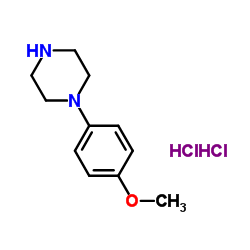67915-31-5
| Name | Terconazole |
|---|---|
| Synonyms |
Terconagole
MFCD05662369 Fungistat EINECS 267-751-6 Triaconazole |
| Description | Terconazole is a broad-spectrum antifungal medication for the treatment of vaginal yeast infection. |
|---|---|
| Related Catalog | |
| In Vitro | Terconazole inhibits the growth of Candida albicans ATCC 44859 in a concentration-related manner, but with modest effects noted at levels from 0.1 to 10 μM when the yeast is grown on media favoring the cell form. The inhibitory potency of terconazole on yeast cell viability varies with the strain and species of Candida tested. The susceptibility of C. albicans ATCC 44859 to terconazole is markedly enhanced when the yeast is grown on Eagle minimum essential medium, which favors mycelium formation. There is a progression of changes, from loss of mycelia formation at 0.1 μM terconazole through complete necrosis at 100 μM[1]. Terconazole blocks the morphogenetic transformation from the yeast into the filamentous form at concentrations of 0.008 to 0.05 microgram/mL[2]. |
| In Vivo | A 3-day once-daily intravaginal application of terconazole 0.8% is usually sufficient to provide a functional therapeutic period of 7 days because of prolonged high biologically active antifungal levels in the vagina. No side effects are observed at any concentration of terconazole[2]. |
| Animal Admin | Rats: The rats are infected intravaginally with C. albicans. They are treated topically twice daily for 3 days, starting 24 hours after infection with a volume of 0.2 mL of various concentrations of terconazole (0.125%, 0.25%, 0.4%, 0.5%, 1%, 2%), miconazole, clotrimazole, econazole, nystatin, or amphotericin B[2]. |
| References |
| Density | 1.35g/cm3 |
|---|---|
| Boiling Point | 681.8ºC at 760mmHg |
| Melting Point | 126.3ºC |
| Molecular Formula | C26H31Cl2N5O3 |
| Molecular Weight | 532.46200 |
| Flash Point | 366.2ºC |
| Exact Mass | 531.18000 |
| PSA | 64.88000 |
| LogP | 4.46560 |
| Index of Refraction | 1.64 |
| Storage condition | 2-8°C |
| Symbol |

GHS07 |
|---|---|
| Signal Word | Warning |
| Hazard Statements | H315-H319-H335-H413 |
| Precautionary Statements | P305 + P351 + P338 |
| Hazard Codes | Xi |
| Risk Phrases | 36/37/38-53 |
| Safety Phrases | 26 |
| RIDADR | NONH for all modes of transport |
| RTECS | TL3564600 |
|
~% 
67915-31-5 |
| Literature: Journal of Medicinal Chemistry, , vol. 26, # 4 p. 611 - 613 |
|
~% 
67915-31-5 |
| Literature: Journal of Medicinal Chemistry, , vol. 26, # 4 p. 611 - 613 |
|
~% 
67915-31-5 |
| Literature: Journal of Medicinal Chemistry, , vol. 26, # 4 p. 611 - 613 |
|
~% 
67915-31-5 |
| Literature: Journal of Medicinal Chemistry, , vol. 26, # 4 p. 611 - 613 |
|
~% 
67915-31-5 |
| Literature: Journal of Medicinal Chemistry, , vol. 26, # 4 p. 611 - 613 |
| Precursor 6 | |
|---|---|
| DownStream 0 | |






